The Best EQ Plugins for Mastering and Mix Bus
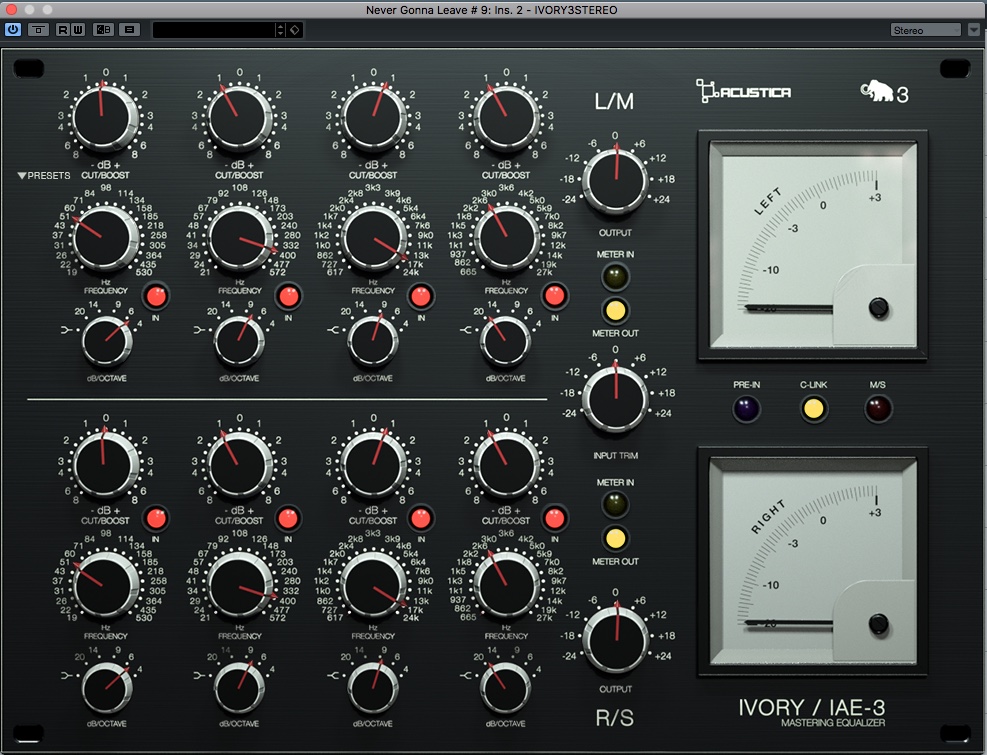
For this roundup, Mike Major auditions more than a dozen of the best mix bus and mastering EQ plugins.
The equalizer is something that we all take for granted.
Every guitar or bass amp, mixer or DAW seems to be equipped with something that allows us to manipulate the tone of our tracks as we see fit.
The offerings range from the simplest of bass and treble controls to multi-band parametric EQs and everything in between.
EQs have become so integral to the way we work that I’m sure most of us couldn’t imagine being able to do our work without some kind of EQ at our fingertips.
Their ubiquity probably keeps some people from appreciating just how powerful they can be when employed properly. It’s as simple as grabbing a knob and twisting…like magic.
There was a time when equalizers were not standard equipment on recording consoles and a studio may have possessed only a few stand alone EQs that would be reserved for the most important or troublesome sources.
Microphone placement was the de facto EQ back then, and an electronic equalizer may have only been used to make up for deficiencies in the mic placement or in how the mic captured the source. It would equalize, or “make it equal”, if you will, to something that had been miked properly in the first place!
There is no way we will ever return to those days, and EQs are now a big part of the sound of modern records and an important part of almost any engineer’s workflow.
Some classic EQs are cherished or even revered for what they can do, which can lead them to be inaccurately classified as “necessary” or “irreplaceable”.
To further complicate things, there’s a surplus of advice on the internet about the best ways to use specific EQs on specific instruments, and you might even be led to believe that you cannot get a good “x” sound without EQ “y”.
“It’s what all the pros are using”, after all. You wanna be a pro, don’t you?
A Lesson in Simplicity
While I agree that having a bunch of quality EQs is a good way to help make things sound their best, knowing when not to EQ can go a long way toward bigger and better recordings.
When I did live sound, the company I worked for had a wonderful sounding Midas PR05. The mic preamps and circuitry were fantastic, and the EQ was probably as good as anything I’ve ever heard on a console. As great as it was, it had one limitation that drove most touring engineers crazy: It had only 3 bands of EQ.
What having this “limitation” did for me was force me to really identify what the real problem was with each source. So rather than cutting the low mid, boosting the bottom, boosting highs and high mids like clockwork, I had to think about what EQ moves would really give me the tone I was looking for.
The wide bandwidth of the mid-band EQ was a lifesaver, and I suspect that the engineers at Midas knew this when they designed it. There was almost no situation that I ever encountered that I couldn’t deal with using only the three available bands. When you consider the fact that the EQ sounded wonderful, it was even better.
The point of all of this is that if you have good tools and use them thoughtfully—rather than reflexively—you can always get superior results.
This approach and philosophy is even more important when you’re using an EQ on your stereo bus or when mastering. The heavy-handed approach that may work well on individual tracks probably has no place on your stereo bus.
Plugs-a-Plenty
Today, limitations are rarely a problem, as almost everyone has some kind of high end EQ at their disposal in plugin form.
The improvement in the sound quality and capability of plugins in the last 4-5 years has been staggering. Many top-flight mixers and mastering engineers are leaning heavily on their plugins, if not using them exclusively—even in their most critical work.
When you combine the excellent sound quality with the ability to have numerous instances of a plugin within a session (and add the perfect recall of all settings with automation!), it makes a lot of sense for most engineers.
Add to that the low cost to acquire the best of the best in the plugin world and it’s a pretty good time to be a fan of EQ plugins. Now, this biggest challenge is not limitation, but rather figuring out just which EQs are worth your time! (And which ones are best suited to the task at hand.)
To that end, I decided to do a deep comparison of some of the most interesting and most heralded plugins for the mix bus and mastering purposes.
The EQ Roundup
This is more of a roundup than a shootout. The differences between each type of EQ in each category were always pretty subtle, and they all sounded wonderful despite the “ranking” I’ve given them.
You don’t have to take my rankings as gospel either. We’ve even included the before and after tracks and complete settings for high res download here. You can also listen to the clips via Soundcloud and see the settings below.
In all honestly, the amount of effort I put into making each of these EQs sound similar makes comparing and contrasting them difficult, but it is interesting and instructive nonetheless. In many cases, it was possible to get very similar results, though by using slightly different settings.
If I tried an EQ that wasn’t up to snuff, I didn’t include it in the roundup because I really saw no value in doing so. There were already so many good choices that adding some bad or mediocre choices would be of service to no one.
Rather than doing one giant shootout of every mix bus EQ under the sun, I decided to divvy them up into four categories, so we could more closely compare the subtle differences between examples in a given category of EQ.
The three tracks that I’ve chosen are songs that I’ve mixed over the last 5-6 months for different clients and they are unmastered. I used a limiter on the end of the chain just to keep the peaks under control, but what you are hearing is simply the track—>the chosen EQ—> some very light limiting. Nothing else.
There is a sample of each song without EQ as well so you can do some before and after comparisons for even more detail. As always, make sure you do your comparisons on good monitors in a trustworthy environment, or on high quality headphones.
If you really want to geek out, I recommend that you download the HOFA 4U+ BlindTest plug in (along with their other amazing freeware). It’s a great way to audition things in a true A/B/X fashion.
Category 1: BAX to the Future
Featured Song: “Enjoy the Night” by Madus
Most of us are probably aware of the Baxandall EQ and have employed its wide, gentle curves with some kind of success. Or perhaps you’ve used it unwittingly by hitting the “loudness” button on a home stereo system.
The Baxandall EQ is a gently rising shelf-like EQ that does a nice job of enhancing the top and bottom end without any weird phase shifts or serious changes in color. Inserting a Baxandall EQ with a simple low and high end boost on your main stereo bus or when mastering often makes things sound better with little effort.
With that in mind, it made sense to start the roundup with a small sampling of Baxandall-type EQs since this approach to EQing an entire mix is often a good place to start.
Since there were only two that were specifically Baxandall EQs (The Dangerous BAX EQ and one section of the Ozone 8 EQ), I thought it was worth including a couple of EQ’s that had similar curves in their shelving filters to try them out in this application.
While it’s not a perfect comparison, the sound and response of each was similar enough for discovering the similarities and differences between these plugins.
Although I rate the EQs in this group from 1 to 5 for this track, it’s probably not the most equitable comparison due to the differences between an actual Baxandall EQ and the other shelving EQs. Even with very similar tone, the character of each EQ ultimately will reveal itself and it’s easy to demonstrate how it may best be used in your workflow.
Audio samples can be downloaded here or streamed at the end of this section.
1. Plugin Alliance Dangerous Music BAX EQ ($249)
It’s no mistake that the BAX EQ came in first place since it’s the purest of all the Baxandall EQs that I was comparing. It has a smooth musical sound that just makes the track sound bigger and more open. It doesn’t take much work to get it there, either.
A simple +1.5dB boost on the low shelf at 74Hz and a +2dB boost on the high shelf at 7.1kHz really made the track feel great. I also rolled the high pass filter up to 30Hz to keep the low end from getting a bit overextended.
With gentle boosts on each end of the spectrum the net result is a bit of a “smiley face” EQ, but it still sounded great. The midrange and vocals never felt like they lost presence or were getting pushed back in the mix.
2. UAD-Precision Equalizer ($199)
Way back when, the UAD Precision Equalizer was the first serious mastering-grade EQ plugin that I ever had on my rig. When I first got my early UAD-1 card this seemed like a no-brainer purchase. I was right. It’s a simple, yet versatile EQ that sounds great on everything.
The shelving bands seemed to sound close enough to the BAX EQ to be a worthwhile comparison, and after a slight change on the high frequency point (from 7.4 kHz to 8.7kHz) it seemed to match the BAX that much better. The low end probably didn’t have as much low frequency rise as the BAX in the sub region but it still had a similar girth and weight.
3. Acustica-Audio Ivory IAE-3 (€159-for bundle)
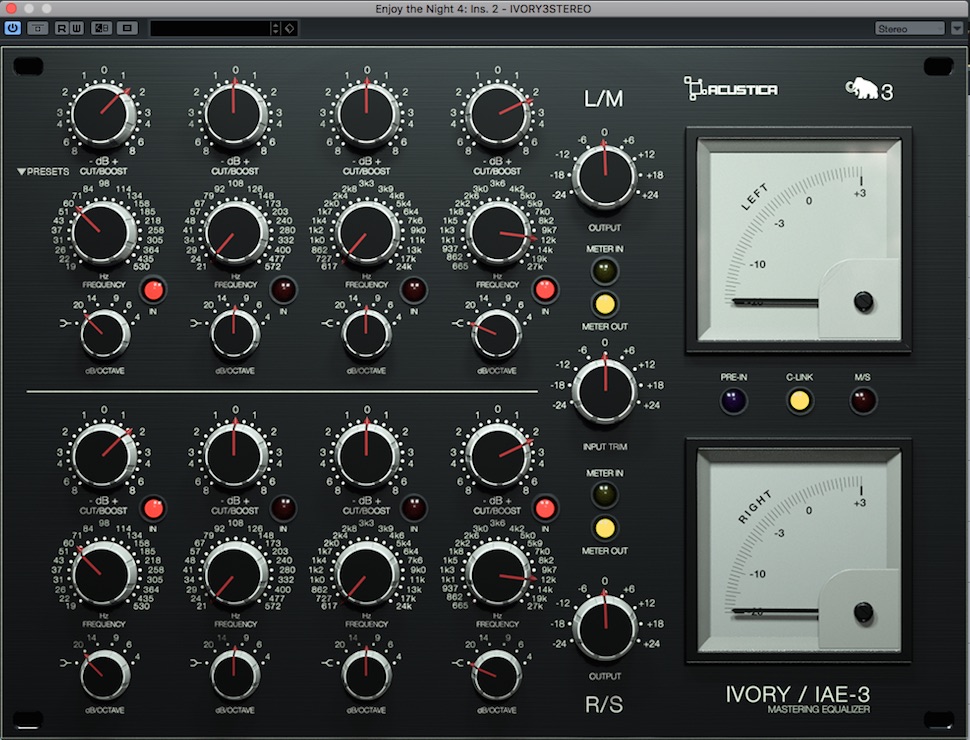 Based on the coveted Maselec mastering EQs, this EQ is pretty remarkable and is much more versatile as a regular peaking/shelving EQ. However, it has a very clean, smooth sound to it that seemed well suited to acting like a BAX…and it did so ably.
Based on the coveted Maselec mastering EQs, this EQ is pretty remarkable and is much more versatile as a regular peaking/shelving EQ. However, it has a very clean, smooth sound to it that seemed well suited to acting like a BAX…and it did so ably.
As you can see from the screenshot of the EQ, I had to take the low end EQ point slightly lower and the high end EQ point a bit higher to get it to match the BAX more closely. Even still, it is very fast and clean with a depth to the low end that is exceptional.
4. Plugin Alliance Mäag Audio EQ 4 ($229)
I almost forgot to include this one because I don’t typically use it on my stereo buss or in mastering since I have too many choices that work so well, but the Mäag EQ 4 was surprisingly good.
The secret with the Mäag is that it has very broad curves (like a BAX) that yield musical results most every time. I think it’s pretty easy to go too far with the “Air” band, but if you show a little restraint, the results are often quite nice sounding.
The frequency choices on the Mäag are at fixed points (though there are 5 choices in the Air Band). Still, it was relatively easy to get it to match the tone of the Dangerous BAX.
The Air Band ended up with a +4.5dB boost at 10kHz, combined with a half-a-dB cut at 2.5kHz to make it have a similar effect on the cymbals and guitars. The low frequency shaping required a boost at 40Hz of 1.5dB and a 1dB cut in the sub region. Again, when you consider the shapes of the curves this all makes sense, but most importantly a similar tone can be achieved with a bit of critical listening.
The Mäag is a bit less smooth sounding than the BAX, but on a track with squishy, mushy, undefined low end it can be a huge problem solver.
5. Izotope Ozone 8 EQ ($499-Bundle)
I included the Ozone 8 EQ, because, as is typical of Ozone stuff, its versatility is unparalleled. In the shelving bands of the Ozone 8 EQ you can choose from 4 different curve types and Baxandall happens to be one of them.
This one was the least colored of the bunch, though I could have just as easily added some type of harmonic distortion within Ozone to approximate the effect of a tube or transformer-coupled circuit. I thought it made more sense to leave it as-is and let Ozone do what it does best cleanly and without color.
This one also needed some manipulation of the frequency choices to get it to match the BAX EQ, with the low frequency EQ boost being slid all the way up to 100Hz and the high frequency boost working best at 8kHz. I also used a slight high pass filter much like the setting on the original Dangerous BAX and it ended up matching very well.
Category 2: You’re So Transparent
Featured track: “Never Gonna Leave” by Justin Paul Sanders
I have always had a soft spot for anything in audio that is transparent and neutral. While most of the devices that are held in high esteem amongst audio geeks are often brimming with character and color, I am not always a fan of having this coloration thrust upon my tracks and then having to be married to it for the rest of the project. I prefer to choose my colors when I feel it is appropriate, and the rest of the time I want to maintain the integrity of the tracks as they were recorded.
This is also my jumping-off point when I’m mastering the work of others. To be sure, I employ devices that musically color a track in a pleasing way whenever the situation demands it, but I always start with a “first, do no harm” approach.
To that end, for this part of the roundup I chose EQs that are inherently transparent and are lauded for their ability to change the tonal balance with minimal effect on the character of the track. This type of EQ is usually agile and does not limit you to specific frequency ranges or EQ curves. In other words, anything you can think of, they can do.
There are a ton of choices in this particular category and they all performed very well. For that matter, they all performed so well that (as it seems in the earlier test) a clear-cut winner was not easy to determine, and without direct comparisons, the differences are practically imperceptible.
I would say that the biggest deciding factor when choosing a transparent EQ for one of these tasks should be its feature set as much as its sound, because most of them sound pretty similar…with some minor exceptions.
1. FabFilter Pro Q2 ($179)
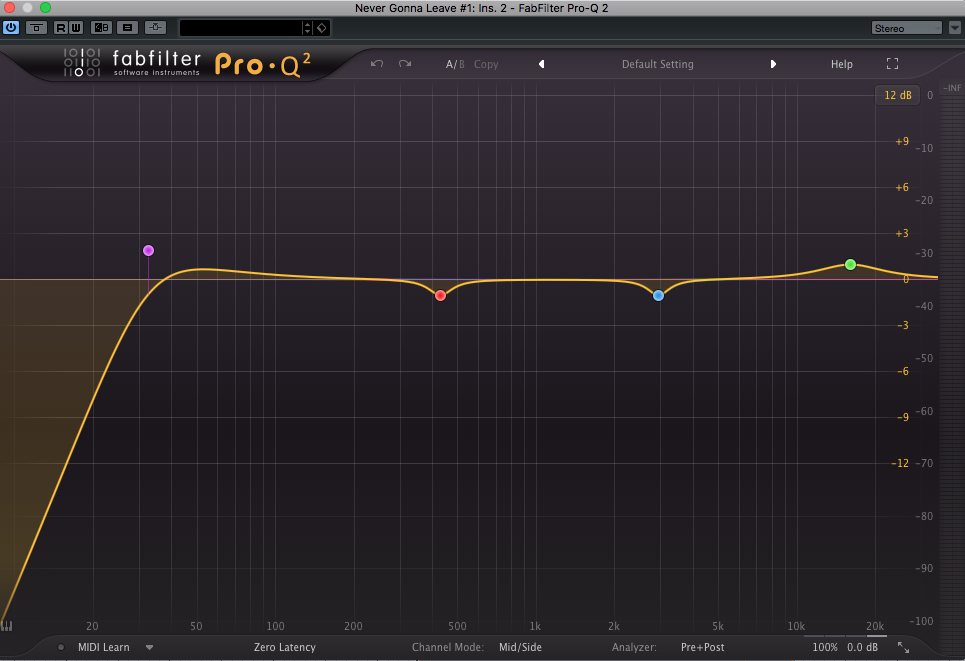
A good friend of mine, Dave Greenberg of Sonopod, was the first person to tell me how much he loves this EQ, and now that I’ve used it a bit, I can see why. It’s neutral yet musical. It always does what you want it to while acting like it’s not there at all.
The Pro Q2 is also one of the most versatile EQs I’ve ever used. You can choose filter types and frequency points freely, and also have the option to decide if you want that particular filter to affect the stereo mix or just the “mid” or “side” component of the mix. It’s pretty amazing. If I had to only use one EQ for mastering all the time, this would probably be the one.
2. Brainworx bx_digital V3 EQ from Plugin Alliance or Universal Audio ($299)
Much to my surprise, this EQ was virtually indistinguishable from the Pro Q2 in effect.
This was surprising to me because, while I have always loved this EQ, I had thought of it more as a “problem solver” due to its versatility and power. But it turns out it’s also remarkably smooth and transparent.
With five bands, plus filters, plus a dynamic EQ band, plus some mid/side tools (and still more), it’s a truly amazing EQ. I think I owe this one an apology.
It’s worth noting that in addition to being on the UAD platform, Plugin Alliance also has this EQ in their plugin line, which makes sense since they are the ones who developed it!
3. Sonoris Mastering Equalizer ($249)
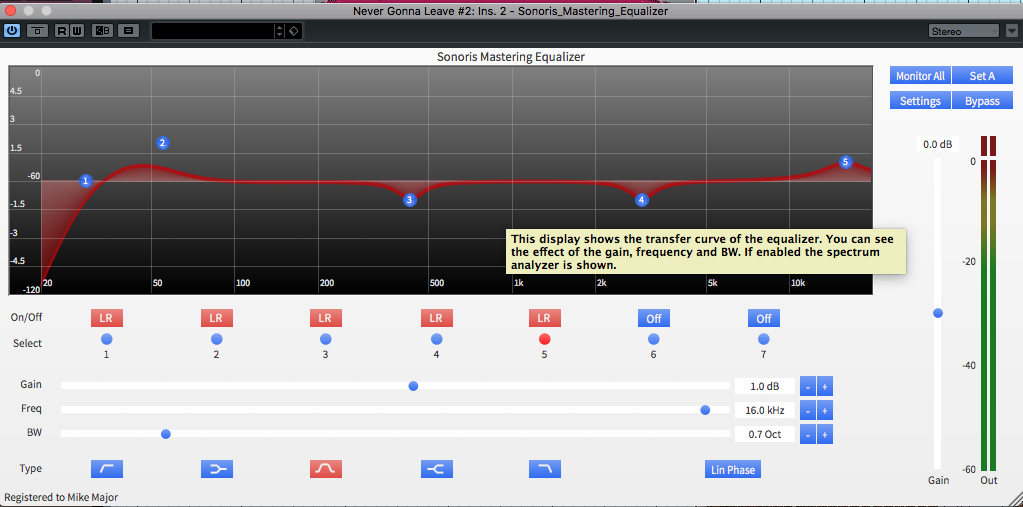
This one is also fantastically transparent. It didn’t seem quite as smooth as the Fab Filter Pro-Q2 (if I’m splitting hairs) but it was super clean.
This is another one that can really work on anything, especially with the number of available bands (7) and filter types (5). Its versatility is enhanced further with the ability to run it in minimum phase or linear phase per band. Pretty cool indeed.
I had two minor gripes: First, it was a CPU hog. It wouldn’t matter so much on a mastering project, as you can deactivate tracks once things are set and committed, but it certainly made me more hesitant to use more than one. I am sure that its fantastic sound is why it uses so much CPU, so I guess that’s what this kind of processing costs!
The other thing that bothered me was the kind of old-looking, Windows 95-esque GUI. I know some people prefer this since it forces you to listen instead of being seduced by its appearance, and I get that. But for me, it comes down to familiarity and ease of operation. I’ve used hardware EQs for so many years that I prefer the EQ to look like I expect it to. Having said that, it’s certainly not difficult to use at all, and its appearance has no bearing on the quality of the sound, which was stellar.
4. Tokyo Dawn Labs VOS Slick EQ (FREE)
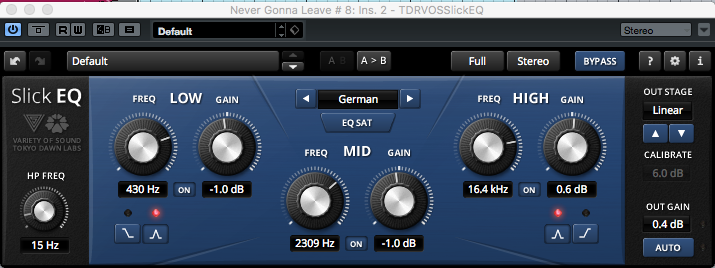 Once again, Tokyo Dawn Labs comes through with an amazing sounding EQ…and it’s free. There’s also the “Gentleman’s Version” for only €50 but I’m not sure if I qualify.
Once again, Tokyo Dawn Labs comes through with an amazing sounding EQ…and it’s free. There’s also the “Gentleman’s Version” for only €50 but I’m not sure if I qualify.
Tokyo Dawn Labs continues to impress me with how good their stuff sounds and you simply cannot beat the price point. Even if it cost significantly more, it will still be one of the best EQs you can buy.
The Slick EQ has a high pass filter and four different modes (American, English, Soviet, German), which makes it even more versatile than a regular three band EQ.
The different modes have a significant effect on the character of the sound of the EQ and I often change the settings after I’ve decided on the appropriate model. They’re all good, but I have found that one usually stands above the rest on each track that I use it on.
On this track, I ended up using the German model because it was very smooth in the upper midrange without any apparent hype in the high frequencies. This was probably the closest match to the other transparent EQs I was evaluating.
It was a little difficult to compare directly with the other EQs in this category because it only has three bands but it was so nice sounding that it didn’t seem to matter.
5. Sonnox Oxford EQ (£200-native)
The Sonnox EQ is important to me because back in 2003, when I first started dabbling in DAW land, it was the first EQ plugin that I heard that sounded good.
Before the Oxford, every plugin seemed kind of the same. Of course, nowadays, EQ plugins are pretty remarkable and the variety of sound is boundless. But even in today’s environment, the Oxford is still one of the best.
In general, it’s very natural sounding, present, and easy to listen to. It’s extremely versatile and can be surgical if needed. I wish the graphic display was a bit larger, but this has no bearing on how wonderful it sounds or how easy it is to operate.
6. UAD Cambridge EQ ($149)
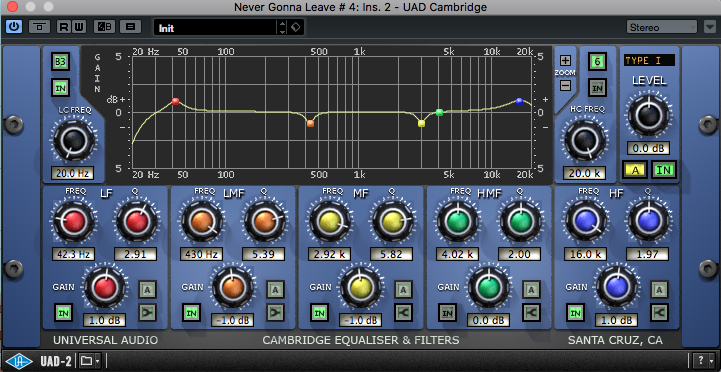
The Cambridge is a great workhorse EQ that always works well and is sometimes the best choice. It’s so, so similar to the Oxford (which I bet was intentional) and in direct comparisons, I couldn’t tell which one was which.
The only real deciding factor with this one is whether or not you own a UAD! As good as this is as a stereo bus and mastering EQ, I use it in mixes all the time for individual tracks too. It doesn’t use much of the CPU and it is comfortable performing any task.
7. Izotope Ozone 8 EQ ($499-Bundle)
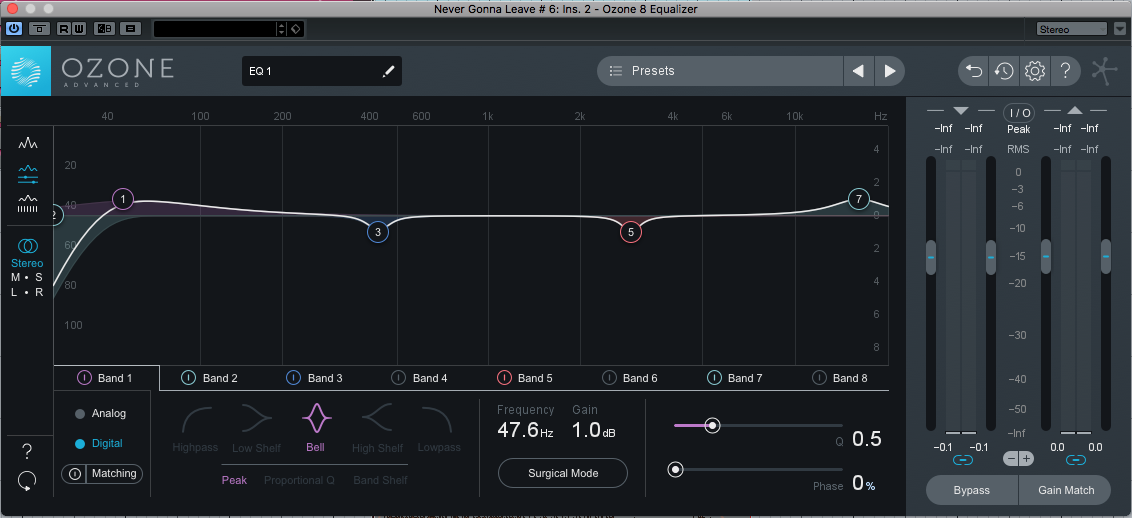 iZotope comes through again with a versatile beast of an EQ. This one can do so much that I probably use it less often just so I don’t have to decide how I want to use it.
iZotope comes through again with a versatile beast of an EQ. This one can do so much that I probably use it less often just so I don’t have to decide how I want to use it.
There are few EQs that have as many options—particularly the multiple curve selections within each band—not to mention the numerous selections within each type (peak, proportional Q, band shelf, brickwall, etc.) The capability is just staggering.
Aside from the saturation modules, the individual Ozone components are usually not character-laden but when it comes to accuracy, it’s at the top of the class. Very nice.
Category 3: Transparent, But Colored?
Featured track: “Never Gonna Leave” by Justin Paul Sanders
There are a few EQs in my arsenal that are very “light-touch” EQs, yet still possess a bit of color, often because they are modeled after hardware EQs. They seem to comfortably walk the line between being neutral and adding a touch of character which makes them attractive and useful in almost any situation.
These types of EQs usually have effortless top end without being too big in the bottom, yet they can still shape the low end effectively and cleanly.
I choose this type of EQ in situations where I want to shape the tone without drastically changing what is there, but feel the track can be helped by some subtle color and harmonic distortion. This is particularly true when the track is a bit sterile or “cold” sounding, even if the tonal balance it pretty close to where it needs to me.
These three EQs all have different curve types and shapes, so the settings were actually pretty dissimilar, but I did my best to match the tone and frequency balance in each sample. Due to the unique strengths of each EQ, I wouldn’t think of the order below as an actual “ranking”, since they all shined in different ways.
So, in no particular order:
1. Plugin Alliance Elysia Museq ($249)
The Museq is a smooth and pleasant sounding EQ in general. The top end is very light but is very revealing of detail. In fact, every time I use this EQ, I do a boost somewhere way up high (say, above 15kHz) and then end up reducing the boost by a half a dB or so; it’s so subtle and pleasant that the change seems small initially, only later to seem to be a bit too much. I really love an EQ that gives me big benefits with small boosts and cuts.
The Museq, unlike the other two EQs in this category, is a five-band EQ. You are given only two different curves per band, but the high and low bands have a “resonant” filter that boosts at the chosen frequency before cutting sharply beyond that point. Despite this minor limitation, it still seems to handle any task I throw at it, and handle it like a champ.
2. UAD Millennia Media NSEQ-2 ($299)

The original NSEQ-2 is one of the most transparent analog EQs I’ve ever used. A studio that I managed for many years had one and I was always amazed at how it could seemingly change the tone of something without sounding like there was any EQ at all. It has such a light touch that a larger boost or cut is sometimes required to get a plainly noticeable change. The plugin version of this EQ performs in exactly the same way as the analog version.
The NSEQ-2 can be run in Class A Discrete JFET or Class A Vacuum Tube mode, which is selectable on the front panel. While it may seem blasphemous, I have never ever found the tube section to sound anywhere near as good as the Class A section. Your mileage may vary!
The markings on the front panel are a bit hard to read at times (particularly frequency selection in the mid bands) but I have never found that to be a hindrance to getting a great result.
This EQ is usually my first choice to add light “air” to a track, regardless of any other problems I may need to solve. I don’t know that any EQ does it quite as transparently.
3. Acustica-Audio Ivory IAE-3 (€159-for bundle)
Even though this one was included in the BAX EQ section, it seemed like a good addition to this section as well since it’s such a clean, natural-sounding EQ.
As you can see from the screenshot of this EQ, the settings were very different from the others, but the tone was wonderful. It has a clarity that extends all the way down to the bottom end, so bass notes and kick hits seem particularly easy to distinguish.
The addition of the “preamp” makes this one capable of exhibiting a bit more color when needed, but even when that is engaged, this EQ is very neutral and musical.
Category 4: Colors, Colours
Featured song: “Deathcult” by Denialist
As much as I love a good, neutral EQ, sometimes I have to dig into the crayon box to make a track shine.
A color EQ that can be used in mastering and stereo bus applications will often be a device that is built to very high-quality standards, without a stringent adherence to absolute neutrality or transparency. The designers are often driven by a desire to affect the tone of something in a pleasing, musical way, while still keeping noise and distortion very low.
I had a number of excellent EQ choices in the “color” department—in fact, more than I had in the other categories.
With all of the good that can come from choices, there was a higher degree of difficulty in comparing EQs directly because of the nature of a color EQ. They’re all unique in circuit design and topology, and the EQ curves are often broad and interactive. In other words, a 1dB boost at 68Hz on one may not resemble the same setting on another.
To start, I set the controls to be “visually” the same and then tweaked things until I had very similar tone from EQ to EQ. This was achieved through exhaustive listening and comparing, followed by using different test tones to attempt to account for the circuit and design differences between each plugin. To be honest, this was not easy.
Just as I experienced in the two earlier sections, all of these EQs sounded wonderful. In the absence of direct comparisons, any one of them would have been an excellent choice for the job.
Even though I have ranked them sequentially, none of the EQs I included were deficient in any way. The differences were typically minor and took a great deal of critical listening to be able to effectively discern.
Even with all of this effort, there are still some noticeable differences between the EQs. Nonetheless, I feel like the tone was consistent enough across all of the samples that a somewhat objective assessment was possible.
(To further reinforce how different these EQs are, just take a look at the screenshots of each EQ setting in this section.)
1. Acustica-Audio Azure (€143.65)
This was my favorite. This EQ is impressively big and smooth sounding, which is fitting since the GUI is visually quite large and easy to look at. It seemed almost non-plugin-like when I first listened to it; it had a very deep, “3D” sound.
The EQ has numerous frequency choices per band with a healthy amount of overlap for shaping the top and bottom end when needed. There’s also a selectable “preamp” section that adds slight color and subtle harmonic distortion without drastically changing the overall character of the track.
It was hard to make things sound bad with this EQ, but more importantly, slight adjustments yielded noticeable improvements…much like any high-end mastering EQ should do. I can’t recommend this one enough!
2. UAD Pultec EQ-1P & MEQ-5 ($299)
This is maybe slightly unfair because it’s really two plugins in series, but getting access to almost the same frequency choices required that I use both plugins.
I used to use the UAD Pultec Pro (still do) which combines these two iconic EQs into one plugin, but the newer models of the Pultecs are such an improvement on the old versions that it was only fair to use them.
These plugins have the standard, included-in-the-box Pultec magic that I love. There’s no EQ better suited to make the low end bigger and to make things clear and bright without them getting too harsh.
Getting the settings to match the tone of the Azure was not easy because the curve shapes are so different, but it was really a close second for me, sonically.
The way they accentuate the resonance of the bass guitar in the low end is delicious! The vocal also seemed to take on a slightly more authoritative quality, which is never a bad thing.
I must confess that if I had to use only one EQ for the rest of my life, it would have to be a Pultec (as long as “one” EQ means both the EQ-1P and the MEQ-5). These make me happy.
3. Plugin Alliance SPL Passeq ($249)
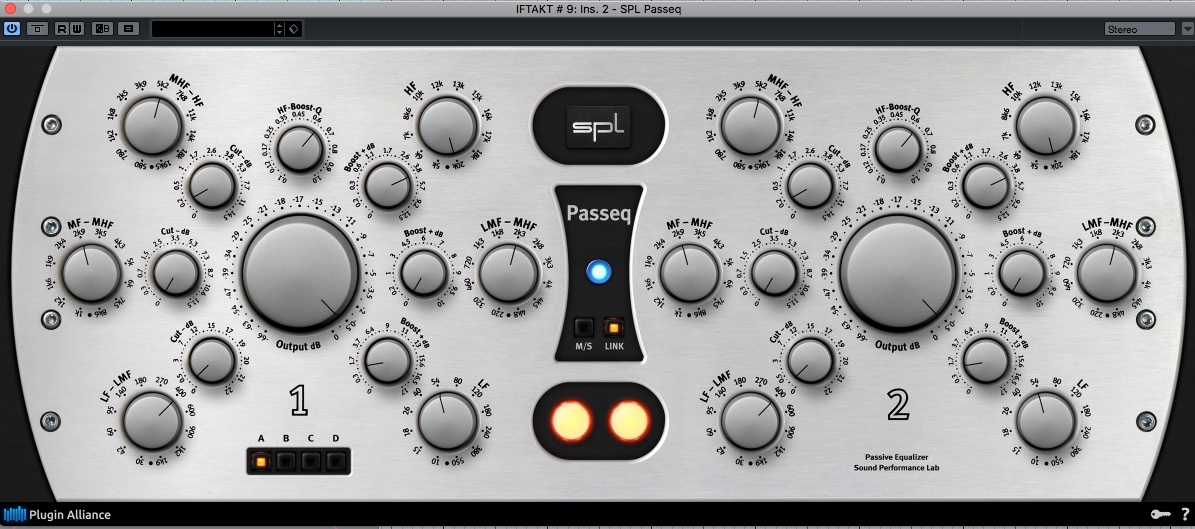
The SPL Passeq has been a favorite of mine for a while, but I didn’t realize just how excellent it was until I did a blind shootout with other EQs.
To choose the Azure or the Pultecs over the Passeq for this particular track was not an easy or an obvious choice. In fact, had I chosen a different song with different requirements, the Passeq may very well have been my favorite.
The Passeq is loaded with passive inductors and features broad musical curves, so when it comes to low end, this thing is a size beast! It’s not difficult to go too far with the low frequency boosts, because it always seems to sound bigger and deeper, but in mastering, cooler heads should prevail.
The top end boost is also very versatile, and can go from subtle to aggressive. The mid band cuts are a bit broad for most duties, but a slight cut of -0.3dB in the LMF goes a long way to keep things clear and clean. It’s not perfect for everything, but it is certainly capable of being perfect in the right situation.
4. Plugin Alliance-Lindell TE-100 ($149)
The first time I saw this plugin offering from Plugin Alliance/Lindell, I was pretty confident I could find a use for it. I’ve now been using it for a while and it has proven itself to be a real heavyweight contender.
Admittedly, I’ve never seen a “real” one in person, but the thought of a box this massive that is filled with tubes suggests that it can only make things sound better, right?
The TE-100 doesn’t disappoint…ever! As you might expect, it’s a “bigness” box, but the way the top end is rendered is equally glorious.
On my first round of blind listens, this was the best of the bunch. Once I tweaked the tone a bit to match my original a bit closer, it barely—and I mean barely—came in fourth place. (If I could have reasonably claimed a “four-way tie for first place, I would have.)
The fixed bandwidth on the midrange bands tends to restrict it to “overall shaping” duties, but it does this so well that typically, nothing else is needed.
5. UAD Chandler Limited Curve Bender ($299)
I did a review of the Curve Bender here on SonicScoop some months back and shamelessly professed my love for this one for all to see. I was probably a little over-the-top, but this one is still a winner to me. It has a cool character to it, even with no EQ engaged, and the frequency choices and curves make it an excellent choice for overall tone shaping on the 2-mix or for mastering.
By using the high pass filter in tandem with the LF, you can usually get thunderous low end with remarkable cleanliness in the nether regions of the track. The silky top end is also a strong point with this plugin, but after playing around with the tone matching on this song, I ended up not using it. It felt open enough as it was. Boom.
6. UAD Manley Massive Passive ($299)
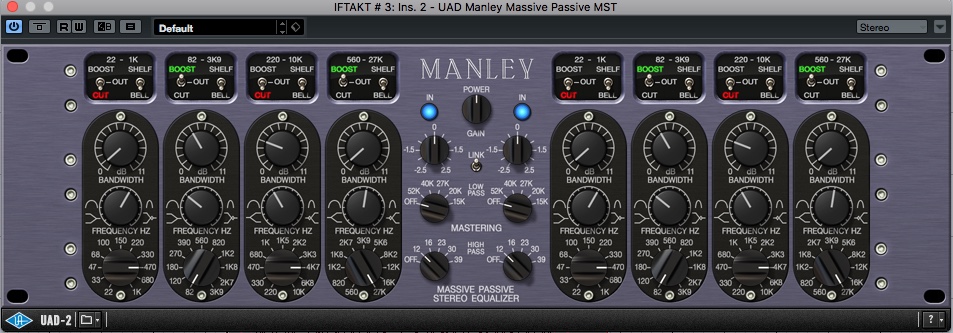
The Massive Passive is a legendary box that sits in many-a-mastering-studio throughout the world. The sheer scale of choices and adjustments make it a great choice for mastering and stereo buss applications. Never mind the all-tube, passive design and Manley’s commitment to quality. This is another one that’s hard to make mistakes with.
The Massive Passive has never sounded particularly open on top to me, and probably shines more on tracks that need some low-mid push. To this end, I played around with the shape of the top end to keep it light while letting the low and low mid bands do their thing.
The fully variable bandwidth for both shelves and bell curves expands this EQ’s functionality exponentially. It’s an incredibly powerful and musical EQ. Perhaps on a track that needed a different kind of treatment, where adding more “heft” and fullness was the name of the game, it could have been the winner.
7. Acustica-Audio Ruby (D.W. Fearn VT5) (€235)
This one is pretty special. It’s certainly not as surgical as some of the other EQs but it had a beauty to it that was reminiscent of the hardware version.
I’ve had the privilege of using a few D.W. Fearn pieces over the years and they’re always wonderfully musical. This one is no different, and it seems that Acustica-Audio does a great job of faithfully maintaining the character of the original.
The settings on this one took some tweaking (much like the Pultec) to get the tone to match, and, as with some of the others, might have performed even better were I not trying to mimic the sound of a completely different type of EQ.
This one feels similar to the Pultec, since that’s kind of what it is, with perhaps a cleaner I/O. Love it.
8. Softube Summit EQF-100 ($199)
The Summit was my least favorite on this particular track—though again, by a very tiny margin. It was still really nice sounding. I have used the hardware version of this plugin on a few occasions and it behaved exactly as I remember.
Like a Pultec, this one has big, wide, broad curves that interact quite a bit so getting the tone to match the more traditional EQ shapes was no easy task. However, this one has a very nice “sheen” to the top end that is flattering and musical.
It doesn’t “bloom” as much as a Pultec or the Ruby, which means it could likely be a benefit on a track that was particularly muddy in the low end.
9. Softube Tube-Tech (ME 1B & PE 1C) ($149 & $199)
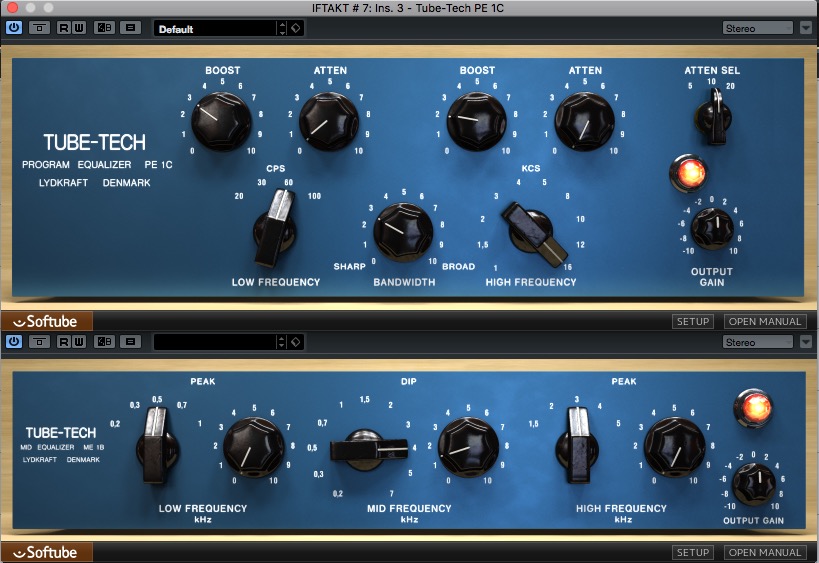
There two EQs are not really in 9th place, it’s just that they were so similar to the UAD Pultecs in sound and operation that I thought they should be included and mentioned at the end just to avoid redundancy.
If you don’t own (or plan to own) a UAD processor of some sort, then this is practically the same thing.
I think the UAD models were slightly thicker sounding but it was only slightly apparent with repeated A/B comparisons.
The settings ended up being almost identical to the UAD, which is what we should expect from accurate models of hardware EQs. If you want a Pultec but aren’t a UAD user, you couldn’t go wrong with these.
The Take Away
Doing this roundup emphasized for me just how many fantastic choices we have these days in terms of high quality EQs.
Where I used to be restricted to a few high-quality choices for the critical tasks, I am now flush with choices, colors and flavors. I never feel like I don’t have the appropriate tool to deal with a particular problem, so it’s now easier to focus on the task at hand and just try to do great work.
I was admittedly surprised (and humbled) while doing some of the blind listening tests and evaluations, because I wasn’t always correct in my assumptions about which EQ I was listening to.
This is important to recognize because it shakes my foundation enough to keep my mind open about choosing an EQ for a specific use; you never know which EQ may work the best! If nothing else, this will probably inspire me to give things a try in situations where I may not usually use them.
There’s nothing wrong with having a bunch of “go-to” plugins, but you should always leave the door open to a different way of doing things. Your music will thank you.
Did we miss any of your favorites? How could we not?? If so, tell us all about it in the comments below.
Mike Major is a Mixer/Producer/Recording and Mastering engineer from Dunedin, FL.
He has worked with At The Drive-In, Coheed and Cambria, Sparta, Gone is Gone, As Tall as Lions, and hundreds of other artists over the last 30 years.
Major is the author of the book Recording Drums: The Complete Guide.
Please note: When you buy products through links on this page, we may earn an affiliate commission.








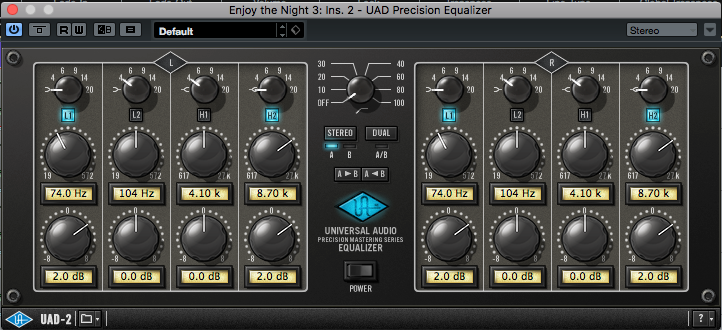
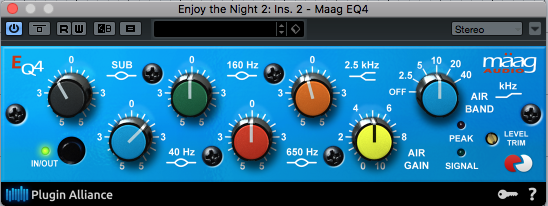
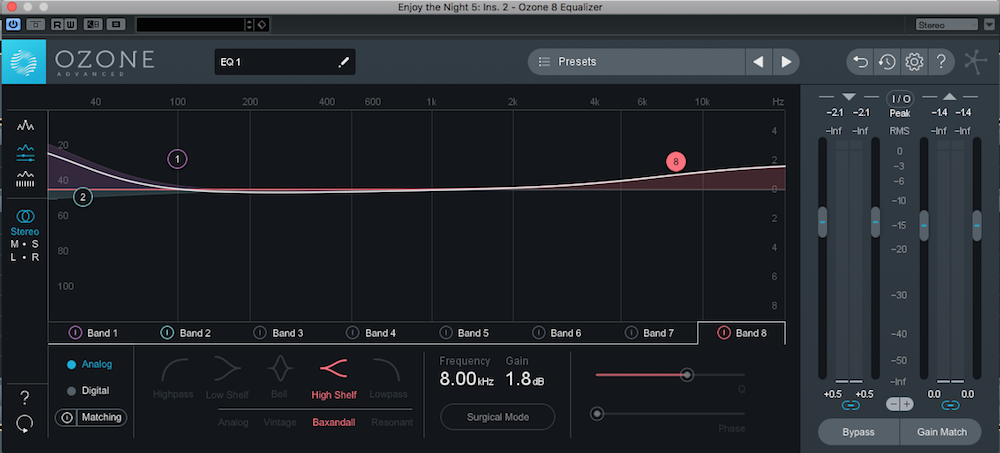
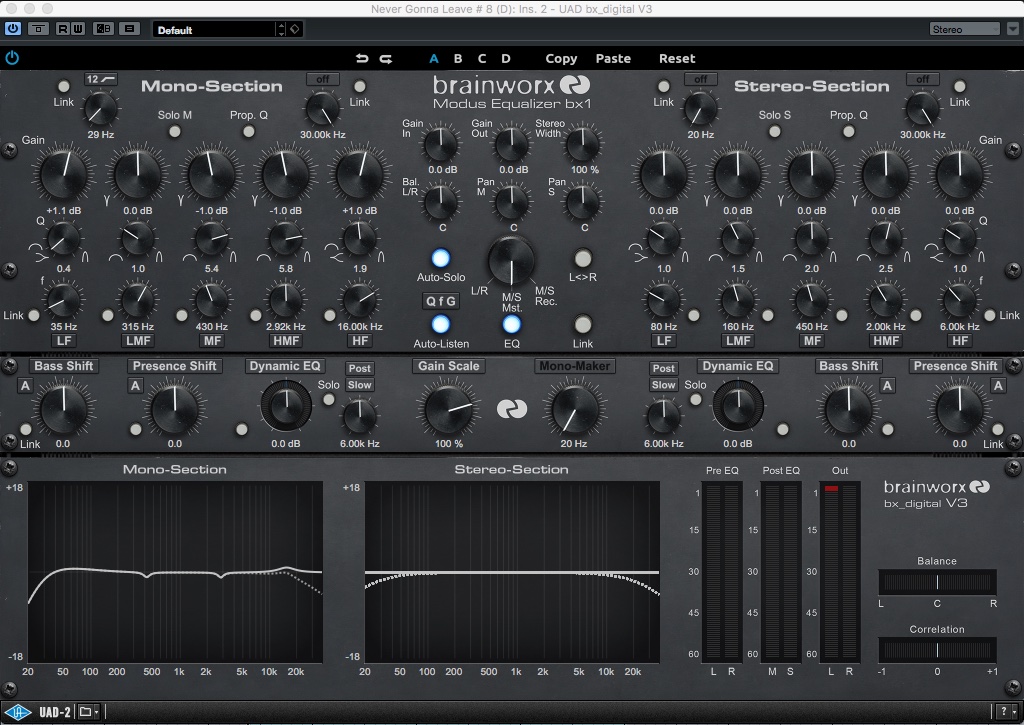
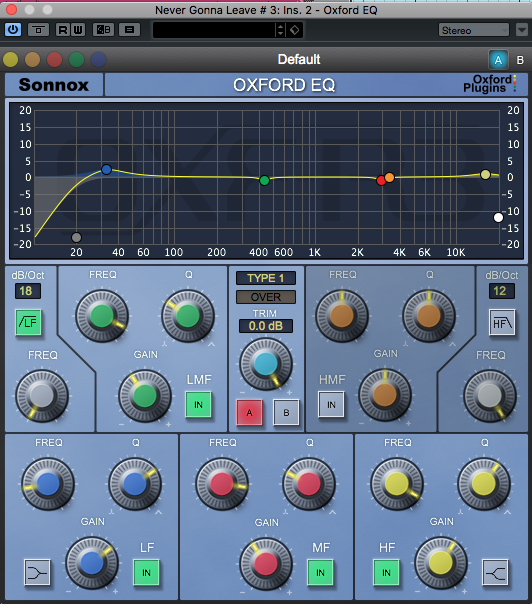

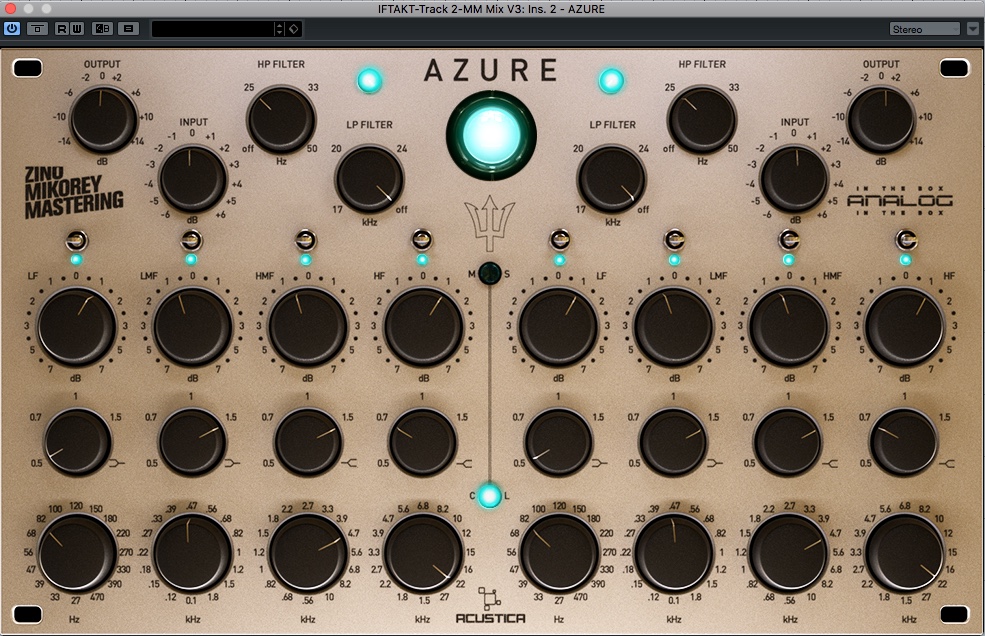
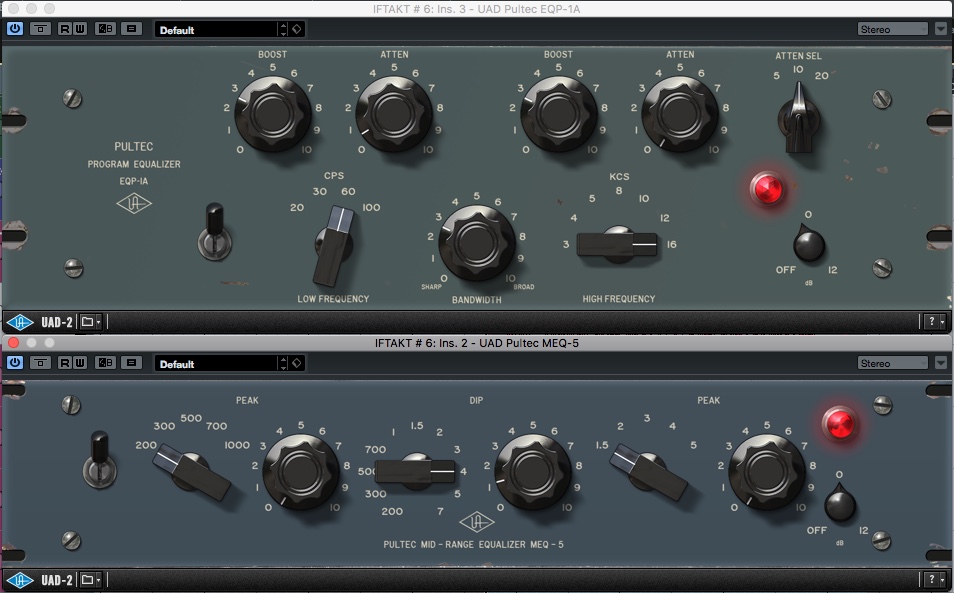
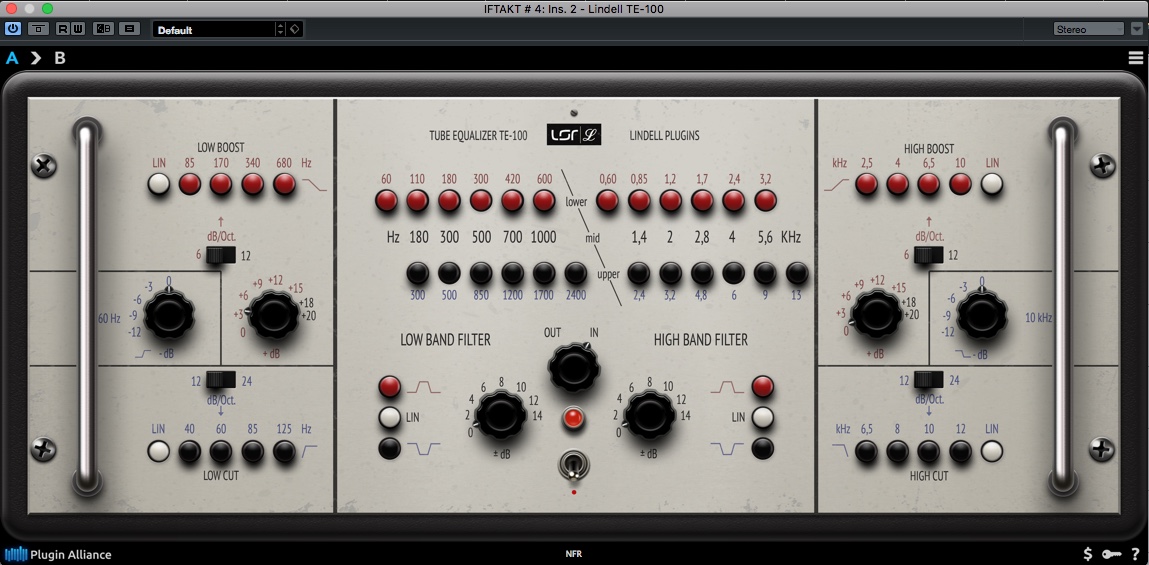
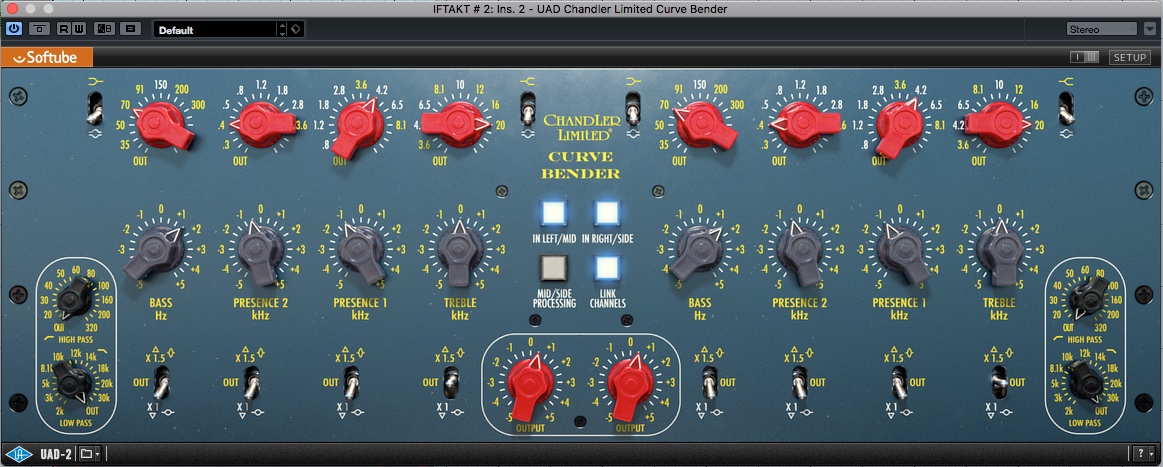
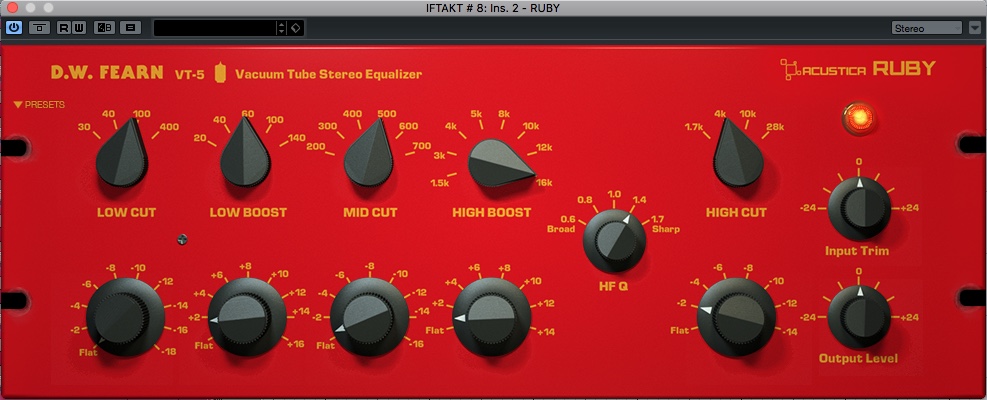
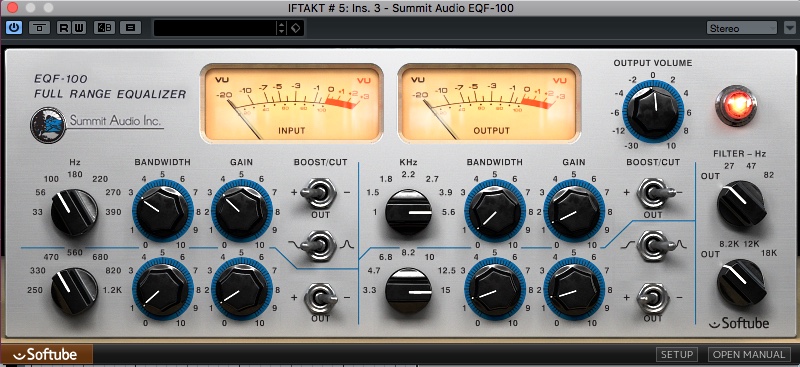
[…] Every guitar or bass amp, mixer or DAW seems to be equipped with something that allows us to manipulate the tone Read more… […]